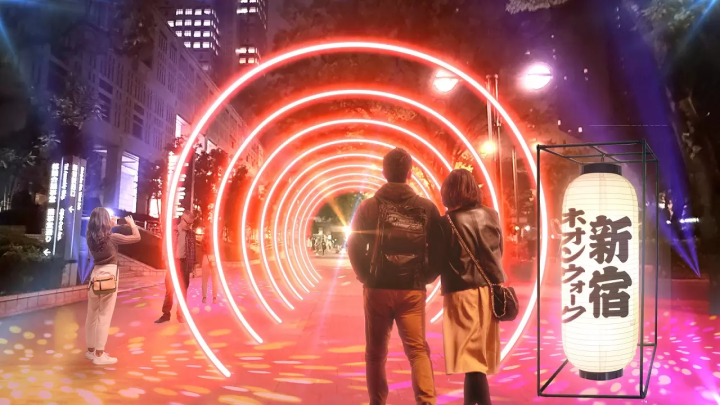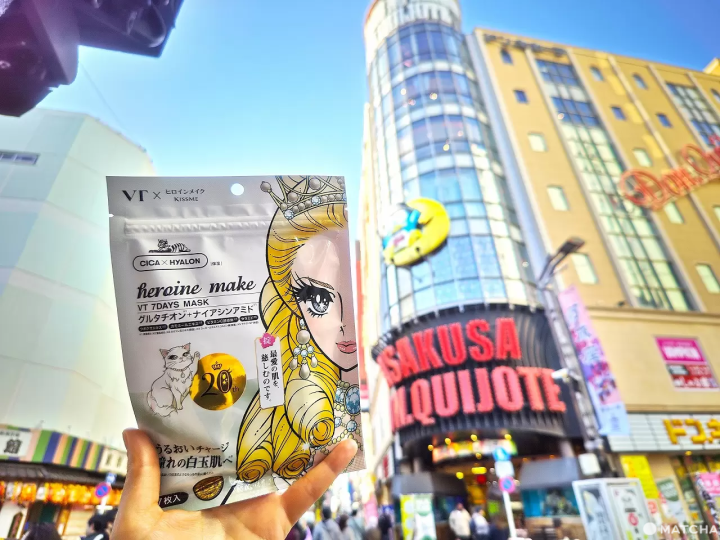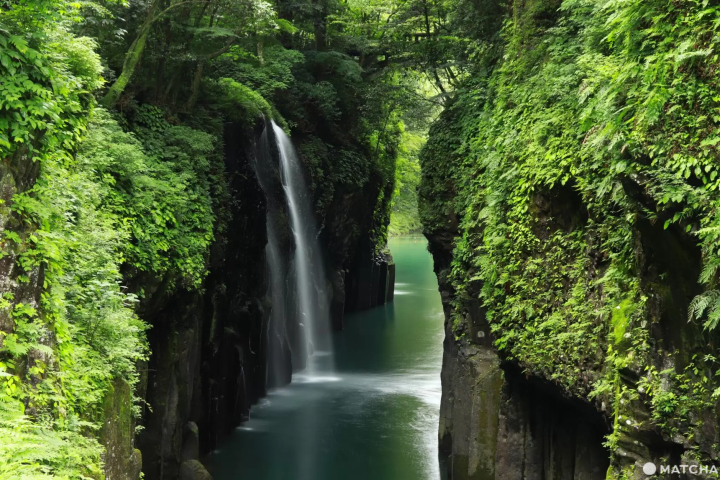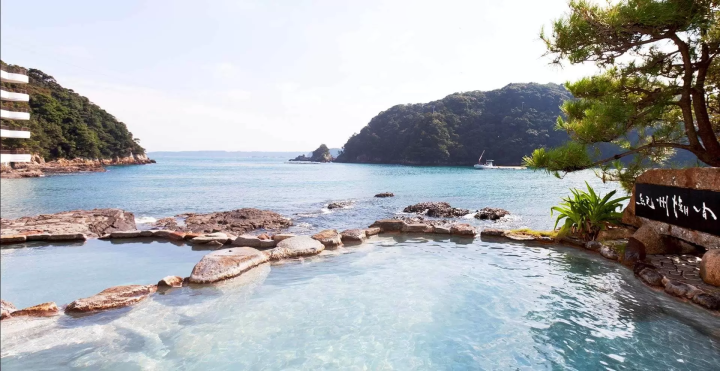[Part 4] Michinoku Coastal Trail Angel Interview (Mr. Yasufumi Nakashima)
![[Part 4] Michinoku Coastal Trail Angel Interview (Mr. Yasufumi Nakashima)](https://resources.matcha-jp.com/resize/720x2000/2025/03/29-229670.webp)
Our final interview was with Mr. Yasufumi Nakashima, who manages the outdoor goods store “EFRICA” in Miyako City.
-
Table of Contents
- Mr. Yasufumi Nakashima (Interview)
- What’s in my trail backpack?
Mr. Yasufumi Nakashima (Interview)
It’s been 5 years since the Michinoku Coastal Trail was established. How did you first learn about the trail?
I originally launched this brand in Yamada Town, and I had a lot of opportunities to work with people there, so I knew about the trail’s existence from that time. My hobby is fishing so I often walked along pathways to fishing spots, and one day I found some blue tape that was fastened to branches and guardrails. I was like “what is this?” at first, but it turned out that they’re actually the Michinoku Coastal Trail route markers, and that’s when I realized that I had been walking parts of the trail unknowingly. Even on the same paths, by consciously walking the trail, rather than just walking aimlessly, I felt that the scenery appeared different. After that, I started taking the time to walk the trail little by little, and became drawn to its beauty.
You mentioned that fishing is one of your hobbies, but I saw on your store’s website that you also enjoy mountain climbing and camping. What is the appeal of trail hiking and what are the differences between it and other outdoor activities?
The reason why I like walking trails is that it provides me with beautiful views and allows me to exercise. When I walk up hills, I try to walk fast on purpose to challenge myself physically. People have different ways of walking trails, but I often skip paved roads and mainly walk nature trails instead. I especially enjoy steep trail routes that almost give the illusion of mountain climbing. Trails in Yamada have varied elevations, making walking them a rewarding experience!
Do you have any recommendations for scenic spots on trails in the Yamada area?
The view from the top of Karogatake, where you can gaze out at the beautiful ocean through the pine trees, is spectacular. Additionally, the walk from Sukuiso Entrance to Ogamasaki offers the Michinoku Coastal Trail’s true charm with the sounds of wild birds and views of the Pacific Ocean through the trees. The red pines, beeches, and giant zelkovas you encounter along the way are breathtaking. You can have a relaxing time in the forest, allowing you to see wildflowers and grasses depending on the season. The current season (the end of November) is particularly good for walking due to the comfortable temperature, but the slopes will be slippery from fallen pine needles, so watch your step when walking. In the summer, it’ll be a little hot, but you can have a different but daring experience like pushing through spider webs as you continue forward. The Yamada area is in close proximity to nature, so make sure to be careful of bears regardless of the season.
![[Part 4] Michinoku Coastal Trail Angel Interview (Mr. Yasufumi Nakashima)](https://resources.matcha-jp.com/resize/720x2000/2025/03/29-229672.webp)
When walking trails, what’s your must-have item? And do you have any recommendations from your store?
My must-have items are a bear bell, a toy gun (which makes noise, sold at a 100 yen shop), bear spray, and a small camera.
As for my shop, I recommend EFRICA’s original socks. I made the under-ankle parts with Merino wool, designed for hiking and fishing, so you don’t get tired so easily. The other day, one of my customers who attended a recent trail event wore the socks and complimented their comfort while walking. They’re slightly large (23~28cm), but they’re made so that women can also wear them. Another recommended product would be the Iron Stonefish Figure. Once upon a time, Matagi (Japanese traditional winter hunters) carried dried stonefish when they hunted in the mountains. According to the legend, the mountain goddess thought that she was unattractive, so when she saw that there was a creature uglier than her, it made her happy. As a result, the mountain weather improved and wild animals ceased to attack. Essentially, the stonefish protected the Matagi. This legend inspired me to make the Iron Stonefish Figure so that it can become a protective charm for hikers. We also have stonefish logo items, nylon shoulder bags, nylon pants, and other various items for sale.
![[Part 4] Michinoku Coastal Trail Angel Interview (Mr. Yasufumi Nakashima)](https://resources.matcha-jp.com/resize/720x2000/2025/03/29-229671.webp)
Seems like you have many useful items for the trail. Do hikers from overseas visit your shop too?
Yes, we have lots of customers from overseas. Recently, visitors from France and Mexico have come to the shop. In addition to providing water and charging spots, we also introduce recommended spots to visitors, so please come and visit us!
How do you communicate with people from overseas?
I talk with them in simple English, or by using translation apps.
Do you have any memorable stories from those interactions?
I do have a story about a carved wooden bear. We have a carved wooden bear as an ornament in front of the shop, and one day, some customers from overseas found it and took a picture of them holding it. Other tourists and hikers saw it and apparently mistook my shop for a photo spot, and formed a long line to take a picture with the bear. After that, I put a note on the bear saying “Lucky Bear / Take a picture and you’ll have good luck” in English, and I started recommending the hikers to take a picture with the bear. If you take a picture while holding it, you might not encounter bears while hiking the trail. Everyone is welcome to come and take pictures!
What a unique story! Thank you for sharing.From now on, even more people will come to walk the Michinoku Coastal Trail. Do you have any requests for the hikers?
The trail routes are designed so that you can walk near the geosites of the Sanriku Geopark, and you can see geological formations like strata and faults from 100 million years ago, so I feel like your hike will be more enjoyable if you learn a bit about the area in advance. In particular, Hidejima Island in Miyako City is also a breeding ground for animals such as the nationally protected band-rumped storm petrel, so you can see lifeforms unique to this area.
Also, before you walk around Funakoshi Peninsula in Yamada, especially around Sukuiso Entrance, I recommend you to read the children’s book “Kaeranu Owashi (The Steller's Sea-Eagle That Never Returns- The Tale of Shichibei the Hunter)” written by Kimio Endo. This book is based on an actual hunter in Funakoshi Peninsula, Yamada. Through this book, you can learn about the natural features and lifestyles of old times and the changes in Funakoshi Peninsula’s ecosystem, and you will read about places that are exactly on the trail route. I suggest you to read the book beforehand, remind yourself of the story, and be immersed in the scenery unfolding before your eyes as you walk- it’s a great way to enjoy walking the trail.
Is there anything you’d like to see in the future development of the Michinoku Coastal Trail?
I think an ongoing issue is the lack of campsites and accommodations for hikers. Funakoshi Peninsula especially has almost none, so hikers have no choice but sleep in the open air in fishing ports. From us hikers’ viewpoint, we don’t need properly managed facilities like campgrounds- so long as there’s a place we can set up tents to sleep. It’d be great if they open up various places like parks or community centers and point out their locations on trail maps as sleeping spots. Compared to other countries, Japan doesn’t quite yet have a trail culture, and people’s image of it is like camping, so it might be difficult…But, if a trail culture, separate from camping culture, becomes more established, I would expect that people who want to support hikers will naturally increase.
What is your message for hikers around the world?
Trail routes like the Michinoku Coastal Trail that take you along the seaside are pretty rare throughout the world. True to its name, the Michinoku Coastal Trail provides a wonderful route along the coast where you can feel a pleasant sea breeze while walking, so please come and try it out!
What’s in my trail backpack?
☑ Bear scare bells and bear bells, sound-only guns sold at 100-yen stores, bear spray, and small cameras
Hello! This is the Iwate Prefectural Coastal Regional Development Bureau, which is responsible for the coastal areas of the Iwate Prefectural Government. We are responsible for 13 coastal municipalities from Tanohata Village in the north to Rikuzentakata City in the south. On March 11, 2011, a massive tsunami caused by the Great East Japan Earthquake struck this area. Although we suffered enormous damage, we have been on the road to recovery thanks to support from all over the world. The area also places great emphasis on disaster prevention education, and has earthquake relics and facilities to pass on the history of the disaster. You can experience the history of reconstruction by walking with a guide. [Famous places in the north] Tanohata Village is home to Kitayamazaki, a series of 200-meter-high cliffs; Iwaizumi Town is home to Ryusendo Cave, one of Japan's three largest limestone caves; Miyako City is home to Jodogahama, a beach of pure white stones said to resemble paradise; and Yamada Town is home to Oshima (also known as Holland Island) and Koshima, both of which float in a calm bay. The Sanriku Railway is the perfect way to enjoy this region. Take a leisurely ride on the local line and enjoy the scenery from the train window. [Famous places in the middle] In Otsuchi town, you can enjoy both the sea and the mountains, such as Horai Island, affectionately known to the locals as "Hyotan Island," and in Kamaishi city, the Hashino Iron Mine, the site of Japan's oldest surviving Western-style blast furnace and a registered World Heritage Site. This area is also famous for its local performing arts such as Toramai and ShikaOdori, and you can experience these ancient traditions at events and festivals. [Famous places in the south] There are many spots where you can experience the region's unique nature and culture, such as Goishi Coast in Ofunato, where you can enjoy the varied scenery of the rias coast; the Iwate Tsunami Memorial Museum in Rikuzentakata, which disseminates the facts and lessons learned from the tsunami; and Roukando Cave, a limestone cave with one of Japan's largest waterfalls inside a cave in Sumita town. This is an area where you can enjoy the blessings brought by the majestic nature while also learning the wisdom and lessons of coexisting with the threats of nature. We look forward to seeing you all.
The contents on this page may partially contain automatic translation.





























![[JR KYUSHU HOTEL Blossom Oita] A hotel directly connected to Oita Station - A comprehensive guide to access!](https://resources.matcha-jp.com/resize/720x2000/2025/10/23-247814.webp)

![Deep dive into Japanese brands! A tour of famous leather shoe stores with GENSEI & Nin [Harta Edition]](https://resources.matcha-jp.com/resize/720x2000/2025/12/18-253277.webp)
